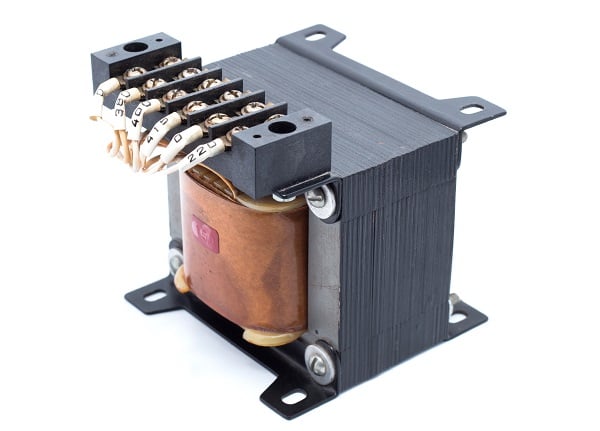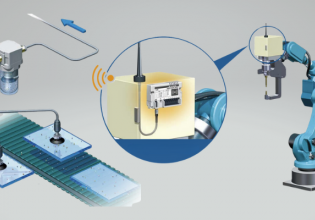Differences between Transformer and Transformer-free UPS Designs
Transformerless UPS designs are taking place in various industries, particularly in aseptic manufacturing, pharmaceuticals, and healthcare, where the reliability of power supply is critical.
What is a Uninterruptible Power Supply (UPS)?
Uninterruptable Power Supplies are becoming common in industrial control applications, providing power backup to critical components during a power breakdown. Additionally, it gives some added advantages, such as isolating sophisticated electronic devices and instruments from spikes in incoming power.
How Does a UPS Work?
There are two main designs of UPS: those containing a transformer and those that are transformerless. The latter is a somewhat newer technology that, as the name implies, eliminates the use of transformers inside the device.
The former category relied on a transformer as a part of the inverter-based technology, providing isolation, stepping down voltage, rejecting noise, and giving a reference point for neutral ground. In the new transformer-free designs, power electronic circuitry (transistors) replaces the function performed by the transformer.
Differences Between Transformer and Transformer-free UPS
Let’s discuss some differences between the two design categories of these power supplies.
Smaller Size
Elimination of the transformer also eliminates associated components such as input and output filters, thereby providing more reduced size and space, over and above just the bulky transformer itself.

Transformer-free UPS have a relatively small size, making it easy for them to be installed in existing electrical control panels of process machinery. Image used courtesy of Adobe Stock
The reduced size and weight provides many benefits as compared to transformer-based UPS. First, it reduces costs associated with transportation and fixed installation. Secondly, it provides an advantage in cases where the process equipment is smaller in size and mobile, where operators have to carry these in the entire production facility to operate.
For example, in pharmaceuticals, quality personnel carry filter integrity testers to check the integrity of devices used in the filtration process. A smaller transformer-less design helps to easily provide power backup to these small, mobile filter integrity testers.
Another example of space saving could be when using a UPS in process equipment, where space is already limited inside an electrical control panel. A UPS can provide power backup to automation components such as PLC and HMI, which could result in program loss in case of sudden and frequent power outages.
Robust Operating Conditions
The environment of many process industries, such as food, beverage, and pharmaceutical manufacturing, requires specialized resilience to conditions like temperature and humidity. Some areas in these process industries inevitably allow the buildup of moisture or foreign particles to remain, such as a concrete utility floor, or near wet product processing equipment. These environmental conditions often create trouble for transformers, such as rust on the ferrous components, corrosion, and damaged terminals, resulting in the failure of the attached electrical system. A transformerless UPS is more easily used in areas of process industries without any harm or malfunction.
Heat can also lead to failure in power products. Both transformer-based and transformerless UPS devices can be easily fitted with a cooling fan to defend against elevated temperatures in certain areas, such as water treatment plants. Additionally, fan filters also prevent particles associated with areas, such as HVAC and boiler areas, from penetrating inside the enclosure.
Maximum Load Capacity
The maximum capacity of a UPS is the output power rating that a UPS can supply under varying load conditions. Although 100% load capacity is required, UPS often operates at 40% to 50% load capacity in practical scenarios

Transformer-based UPS are available in larger capacities as compared to transformer-less UPS. Image used courtesy of Adobe Stock
Transformer-less UPS are available in smaller power ratings, typically up to 300kW, while transformer-based UPS can be operated up to 1100kW. The reason for the decreased capacity is the internal structure, as solid-state IGBTs cannot provide a high-speed switching function at a large power rating, as solid-state devices decrease switch speed as the current through the device increases.
However, the capacity difference can be easily compensated because most UPS run and operate at 50% of the maximum available capacity and are not often used up to their total power.
Output Configuration
The output configuration of a UPS indicates how the power output and its wiring are used for practical load applications.
A transformer-based UPS provides greater flexibility in utilizing the output voltage and ground terminals. A three-phase transformer-based UPS can be used as a traditional system, such as 3 – a wire delta comprising of three phases and a ground, or 4 – wire comprising of three phases, ground and a neural.
For a transformerless three-phase design, the output voltage is the same as that at the input, and additionally, it does not provide a neutral wire. If neutral is required, it is directly connected to the inverter. However, in this case, there is no isolation between the input and output circuits in this case. This can create challenges when dealing with voltages with the line–to–neutral load.
Fault Current Tolerance
Fault currents are common in uninterruptable power supplies, faults that disturb the loads connected to the output of a UPS. Tolerance of a UPS to fault current indicates its ability to prevent and manage internal faults without disturbing the load characteristics.
Transformer-based UPS provides fault tolerance through the transformer because it blocks the current fault conditions and limits the current flowing from the input section to the output section through a concept known as ‘Galvanic isolation.’ These devices also use current protective devices such as circuit breakers, fuses, or a combination of both.

Although transformers provide some advantages, both the size and weight contribute to the bulk of older designs. Image used courtesy of Adobe Stock
The transformerless design does not provide an effective fault current tolerance. For applications that require fault tolerance, an external isolation transformer is added to provide the fault current tolerance as described above.
Transformerless UPS Designs in Industry
For applications where power delivery is critical, where failure means disaster for more than simply monetary downtime, the UPS is an irreplaceable feature. Just as motor controls have converted over the years from step-down transformers to digital VFDs, a similar shift has been experienced in the field of power delivery, ensuring success for stable power conditions for many years.






